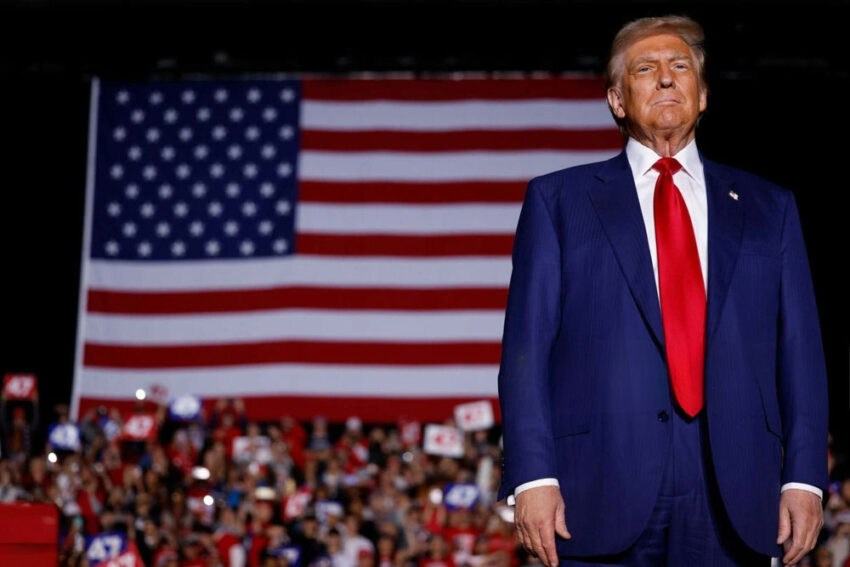President Trump’s new executive order to prosecute American flag desecration marks a dramatic federal push to restore respect for national symbols, igniting fierce debate over constitutional rights and national identity.
Trump’s Executive Order Targets Flag Desecration
On August 25, 2025, President Donald Trump signed an executive order instructing the Attorney General to prosecute individuals who desecrate the American flag, including burning, as aggressively as existing laws allow. The order was announced from the White House and quickly covered by major news outlets. By extending penalties to immigration benefits for foreign nationals, Trump’s administration aims to deter provocative acts and reinforce the flag’s sanctity. This move comes after a wave of high-profile protest incidents involving flag burning, restoring focus on patriotism and the Constitution’s limits regarding symbolic speech.
The executive order does not make flag desecration a new federal crime but directs prosecutors to use all available tools under current statutes. The Department of Justice will refer cases to state and local authorities, seeking maximum penalties where possible. The order also calls for federal agencies to deny immigration benefits to any foreign national found guilty of flag desecration. These measures directly challenge Supreme Court precedent from Texas v. Johnson (1989), which held that flag burning is protected symbolic speech under the First Amendment. Trump’s action signals a dramatic break from previous administrations, reflecting frustration among Americans who see flag desecration as an attack on national values.
Legal and Constitutional Tensions
Legal scholars widely agree that the Supreme Court’s prior rulings protect flag burning as free speech, making the new executive order vulnerable to constitutional challenge. The administration insists that its directive targets conduct that incites violence or amounts to “fighting words,” which the First Amendment does not protect. Civil liberties organizations have signaled plans to challenge the order in court, citing risks to free expression and government overreach. Meanwhile, the Department of Justice and the Department of Homeland Security are developing guidance for law enforcement to interpret and enforce the new rules, leaving open critical questions about how far federal prosecutors can go without violating judicial precedent.
President Trump and Attorney General Pam Bondi are leading the push, emphasizing the flag’s status as a sacred national symbol and responding to public anger over perceived anti-American protest tactics. The administration’s supporters argue that strong action is needed to deter disrespect and reinforce patriotism. Critics warn that aggressive prosecution risks chilling legitimate protest and undermining core constitutional protections. With no immediate reports of prosecutions under the new directive, legal battles and public debate are expected to intensify, setting up a potential confrontation with the courts over the boundaries of free speech and executive power.
Broader Political and Social Impact
The order’s short-term effects include heightened scrutiny of protest activities and increased legal risks for both citizens and foreign nationals. Immigrant communities may face new hurdles, as federal agencies enforce penalties for involvement in flag desecration. Politically, the directive energizes Trump’s base, who see it as a victory for national pride and common sense, while opponents frame it as government overreach. The long-term impact could involve major legal challenges, a Supreme Court review, and ongoing debate about balancing individual liberty with respect for national symbols. For now, the executive order stands as a high-profile flashpoint in America’s struggle to defend conservative values against perceived erosion by leftist agendas.
Trump Signs Executive Order Directing AG to Prosecute Flag Desecration https://t.co/TF1mMz7XNO
— Ziggy Pernot (@ZiggyPernot) August 25, 2025
Experts note that the effectiveness of Trump’s order will depend on how courts interpret its scope and whether it can be reconciled with First Amendment jurisprudence. Some commentators view the move as primarily symbolic, intended to signal priorities rather than effect substantive legal change. Others warn that the order could unleash a wave of litigation, further polarize political discourse, and test the limits of executive authority. As the Justice Department begins implementation, the nation watches closely to see if this aggressive stand for the flag will hold or be struck down by the courts.
Sources:
White House Fact Sheet: President Donald J. Trump Protects the American Flag from Desecration
Axios: Trump signs executive order targeting flag burning
Official Executive Order Text: Prosecuting Burning of the American Flag
CBS News: Trump signs executive orders on flag burning, cashless bail
Click this link for the original source of this article.
Author: Editorial Team
This content is courtesy of, and owned and copyrighted by, https://ourpatriot.com and its author. This content is made available by use of the public RSS feed offered by the host site and is used for educational purposes only. If you are the author or represent the host site and would like this content removed now and in the future, please contact USSANews.com using the email address in the Contact page found in the website menu.





